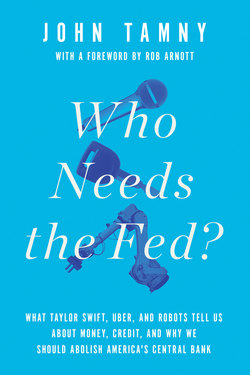Читать книгу Who Needs the Fed? - John Tamny - Страница 16
На сайте Литреса книга снята с продажи.
ОглавлениеCHAPTER SIX
Ben Bernanke’s Crony Credit
In my career, the Fed has a 100 percent error rate in predicting and reacting to important economic turns.
—John Allison, retired Chairman & CEO of BB&T Bank
IN 2015, Chicago-based hedge fund Citadel hired former Federal Reserve Chairman Ben Bernanke as an outside advisor. What’s interesting about the hire is that the founder of Citadel, Ken Griffin, is said to have a net worth of $7 billion.1 What Griffin’s financial worth clearly reveals is that he’s a rather brilliant investor.
In that case, why hire Bernanke? Griffin’s immense wealth signals that he has been right when it comes to predicting the future more often than he’s been wrong. And as John Allison has observed, the Fed is always wrong.
One guess is that Griffin hired the former Fed Chair with an eye on betting against his economic predictions. Stranger things have happened. While at Goldman Sachs, in a previous career, this writer was made aware of clients who would ask what Goldman’s economists were forecasting, only to build investment positions contradicting those forecasts.
More realistically, Griffin was likely buying access to Bernanke’s connections at the Fed. Although he is no longer in the Fed’s employ, it’s no major reach to say Bernanke can easily get anyone there on the phone at any time.
This matters, because what the Fed does can profoundly affect market prices. The Fed, in seeking to influence the federal funds rate that banks charge one another for overnight loans, is frequently a “size buyer” of Treasury bonds held by banks.
To use but one example, on August 19, 2015, the Fed released its “minutes” to various news organizations, including Bloomberg. The minutes reveal the thinking of the Fed officials whose decisions affect the buying of U.S. Treasuries. Knowledge of what those inside the Fed feel about the economy is valuable to asset managers and hedge funds that trade Treasuries based on this information.
There was nothing abnormal about what the Fed did. News organizations regularly receive the central bank’s minutes ahead of their release to the general public so that reporters can have a story ready once the Fed officially makes them public. Until then, reporters abide by the embargo rule: They don’t publish any information about the minutes until the Fed has released them.
